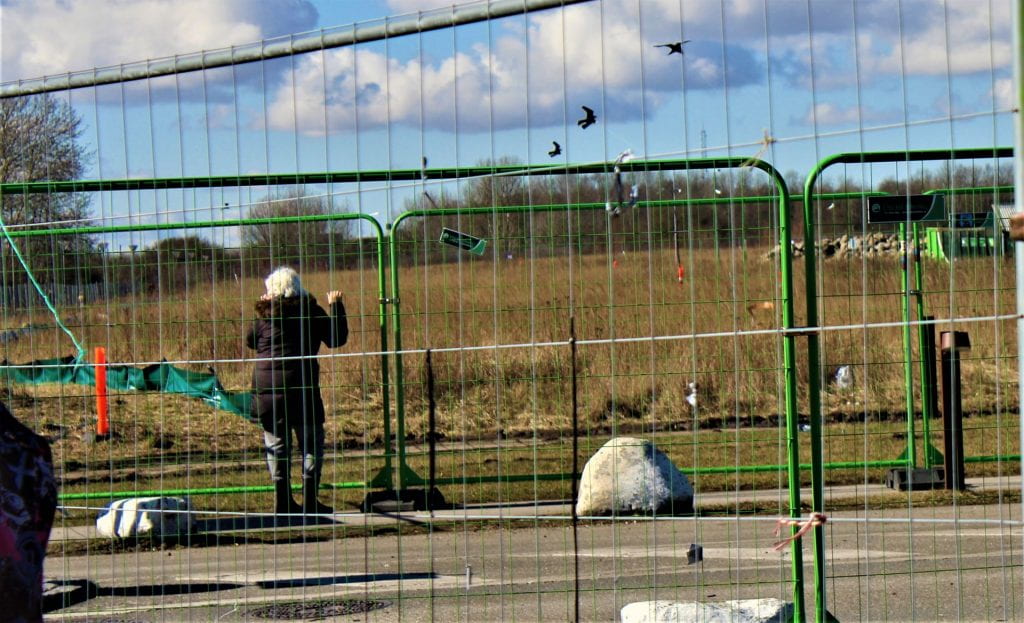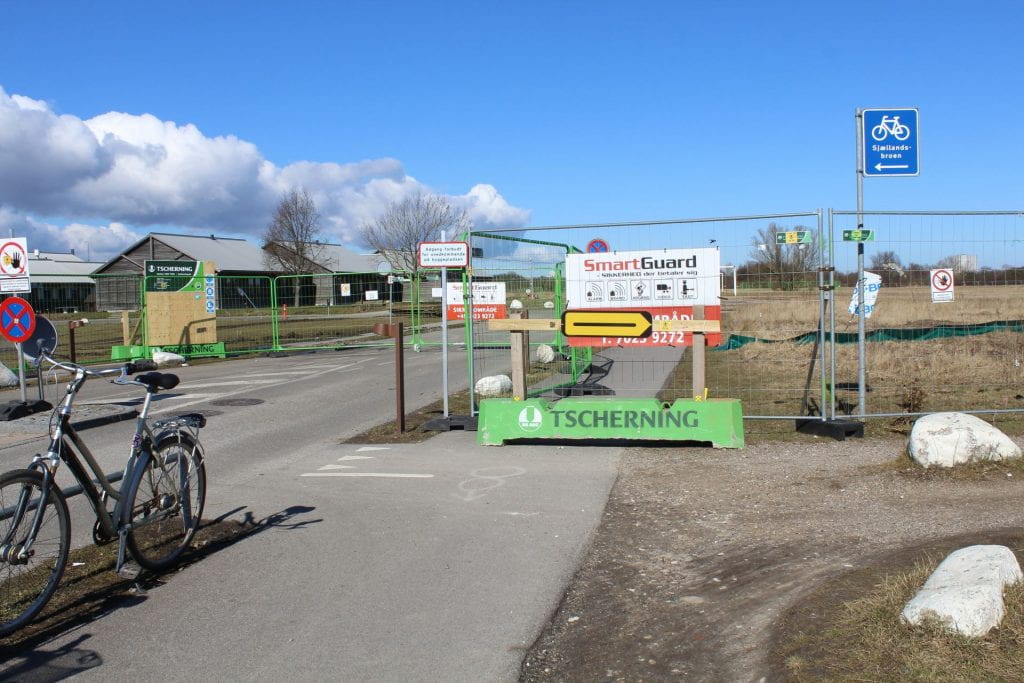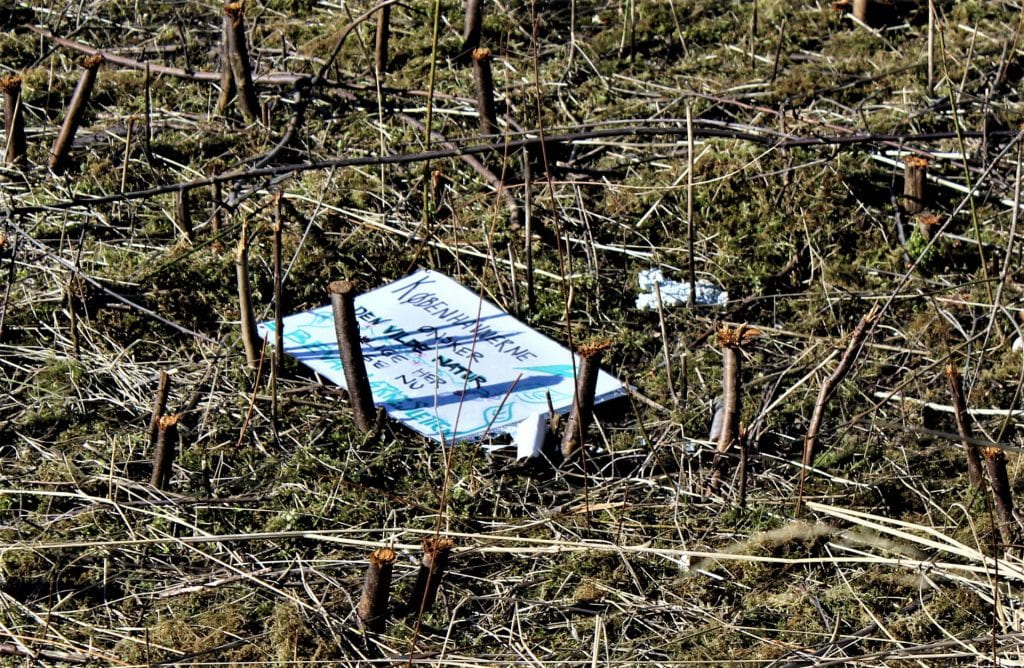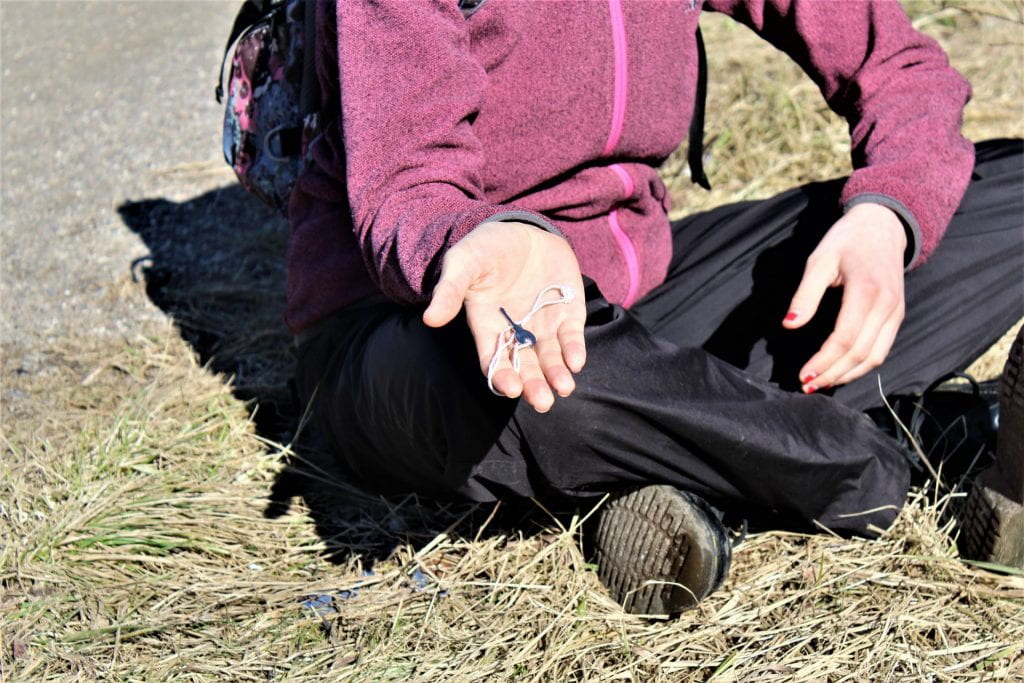By Beata Wallsten and Sandra Kaarsgaard, Tuesday March 16th 2021

With a high request for housing in the Danish capital Copenhagen, the municipality of Copenhagen voted for building 2000 new apartments in the preserved green area called Amager Fælled.
A decision that has been disputed and questioned by locals and environmental organizations.
“I am here because we are standing in the midst of a huge biodiversity crisis. These people are going to build on wild nature, and we need to protect wild nature because we are losing it so fast, and we have so little of it left”, says 17-year-old Copenhagener and environmental activist Katinka Eskildsen.
This area is special because it has threatened species: The lark which is only laying eggs here for example.
Just the fact that it is nature and wild animals are living here is enough to protect it because we have so little wild nature left.
Katinka Eskildsen
It is a mid-March Tuesday and together with two of her fellows from the environmental organization Extinction Rebellion, she is sitting next to a green field enclosed by a green constructing fence.
Behind it, there are parked trucks with all the things needed to start building apartment blocks.
Trucks that Katinka Eskildsen and her partners have tried to stop from driving onto the green field by chaining themselves to the fence and barricading the entrance day and night.

Housing vs. green areas
Amager Fælled, situated on the island Amager in Copenhagen Municipality, used to be for military practice. Since 1992 it has been a preserved, protected area to shelter it from economic interests and protect biodiversity and the green lungs of the city.

However, in 2019 the protection of the area was repealed, and Copenhagen Municipality started the process of selling an area of the Fælled to build more housing.
Now the new housing project planned on Lærkesletten has been green-lighted by the municipality’s politicians:
“We abandoned the plans of building on the area of Amager Fælled called Gammel Strandeng, where the biodiversity is the highest, and moved the construction plans to Lærkesletten, that has the lowest diversity,” says political spokesperson for the Social Democratic group in Copenhagen Municipality, Jonas Bjørn Jensen who voted ‘yes’ to the construction.
It has been a hard plan to approve, because we want more city nature, we want more cheap housing and we want more metro, but I think we have hit the best balanced compromise.
Jonas Bjørn Jensen, Spokesperson for the Social Democratic group in Copenhagen municipality
The availability of housing is a hot topic in Copenhagen, and has led to a lot of new projects for living spaces. Not only with the project on Amager Fælled, but also a new artificial island, that can possibly be inhabited by 35.000 people in 2050.
Copenhagener Kirsten Hansen is on a walk along the green fence, enjoying the warm rays of the spring sun. According to her, the housing problem can’t be solved by trading green areas for new construction:
“We do not have a housing crisis because there is not enough housing, we have a crisis because the prices are too high. There is enough housing but people cannot afford to live in them.“
Kirsten Hansen lives close to Lærkesletten and claims that using it as a recreational area has been crucial to her during periods of stress:
“I think that the politicians should reconsider what they are doing and come and take a walk here”, she says.
The political issue

“This is as simple as a democracy crisis. Because three out of four of the Copenhageners are against this building and yet only two parties vote against it”, says Katinka Eskildsen. Photo: Sandra Kaarsgaard
“They need to listen to the people and not only big companies and think about how they are going to get re-elected in four years. This is going to be a huge topic for the election this year and I hope that the Copenhageners will vote for those who actually listen to them”, she continues.

The efforts of the activists that not only chained themselves to the gates, but also took over the Ministry of Environment dressed as larks and nesting on the floor, have not gone unnoticed by the politicians at city hall:
“I have great respect for people, who fight for what they believe in, and that’s also what I do in politics” says Jonas Bjørn Jensen.
The activists represent a group of people that disagree with decisions made by a majority of Folketinget as well as the municipality.
I think they are an important part of democracy and that these reasoned discussions are important to have.
Jonas Bjørn Jensen
